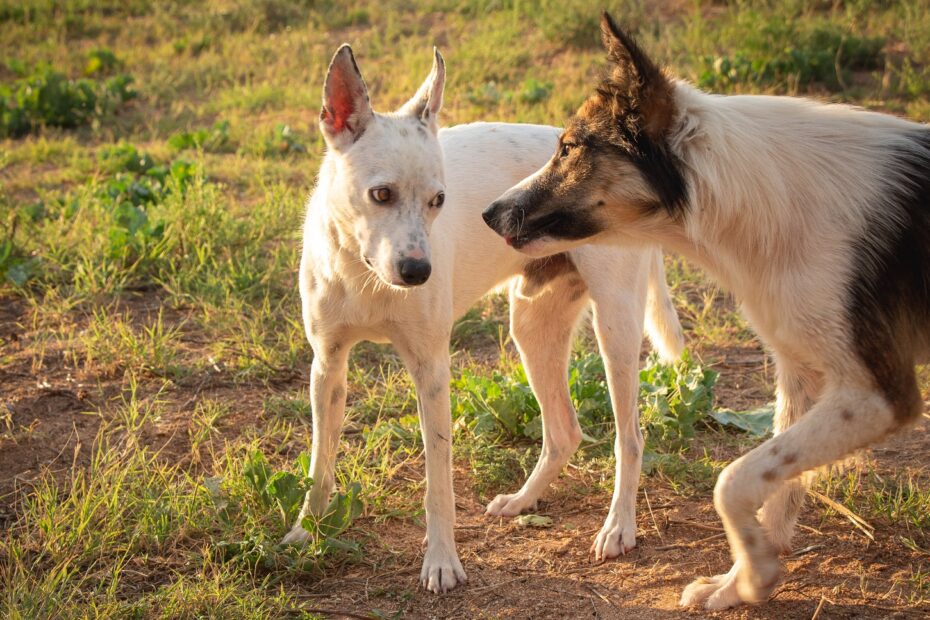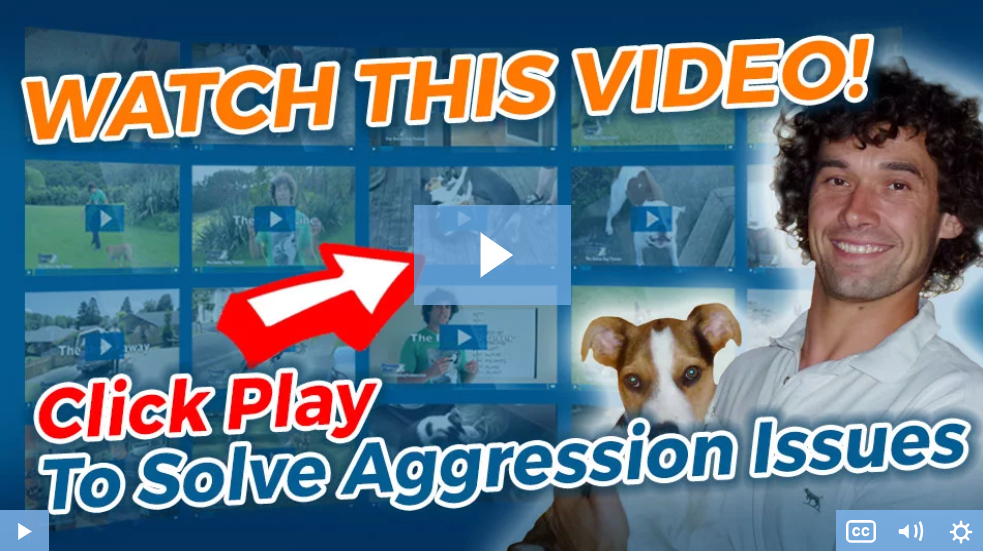Why is my dog growling at other dogs all of a sudden? If you’re asking yourself the exact same question, don’t panic.
Believe it or not, it’s by no means uncommon for dogs to growl at each other. Obviously, that doesn’t make it any less frightening when it happens. But it does mean that hundreds of thousands of other dog owners have already been there, seen that, and got the t-shirt to prove it.
Providing they tacked the problem in the right way, most of those t-shirts read “Problem Solved.”
Because here’s the thing. For now, all that growling is scary. If your dog growls at every dog they meet on a walk (or, even worse, every other dog you have in the house), it sounds menacing.
If that growling escalates into a fight, it can rapidly go from menacing to dangerous. But it’s not something you just have to learn to live with.
For every problem, there’s a solution. Find out what’s motivating your dog’s behavior, and you’re already well on your way to modifying it.
Obviously, not every growl ends in fisticuffs. Sometimes, growling is appropriate; other times, it’s anything but. More than anything else, it’s a way for your dog to communicate something they’re feeling.
…Maybe they want you to know that the other dog is scaring them.
…Maybe they’re staking claim to their patch or a possession.
Either way, finding out what’s behind the growling is the first step in moving past it.
The second step? Watching the video below from the Online Dog Trainer, Dan Abdelnoor.
Obviously, simply watching a video isn’t going to stop your dog from growling. But introducing them to a few simple, highly effective calming exercises demonstrated in the video below, you’ll learn how to make a huge difference to their behavior.
In short, these exercises are designed to help any dog master the basics of emotional control, while teaching your dog how to stay calm, focused, and in control regardless of what’s happening around them.
So before you do anything else, here’s the video link to take a look: Click Here To Discover How To Finally Solve Your Dogs Scary, Aggressive Growling Problem Using A Few Simple Calming Exercises That Take Just Minutes A Day To Implement… Even If You’ve Tried & Failed Before!
Once you’ve checked out the video, you can crack on with bringing that growling under control.
(video will open in a new window)
Why is My Dog Growling At Other Dogs All of a Sudden?
Before anything else, growling is a form of communication. Finding out exactly what your dog is trying to communicate with their growls is the first step in identifying and tackling the problem.
Take a look at some of the following common explanations. Do any strike a chord?
Establishing Rank
Packs aren’t the kind of social system where everyone is equal, and everyone has their same say. There’s a hierarchy.
At the top, there’s a leader, a top dog who gets first dibs on anything worth having and who gets to decide what happens, when. After the leader, there’s a pecking order, with no two dogs having equal status.
That kind of hierarchy might not sound much fun to us, but typically speaking, it works for dogs.
Basically, it creates boundaries: if every dog knows their place, there’s no need to squabble over food, access to mating rights, or even the best spot for snoozing.
The problem (at least from the perspective of an outsider looking in) is that in order to maintain that hierarchal structure, a bit of aggression is often needed.
If subordinate dogs start acting above their station (grabbing food before it’s their turn, etc.), dominant dogs might growl at them to remind them of their place.
In doggy terms, it’s simply a case of the higher status dogs teaching the lower status dogs pack manners.
This type of growling is normal, natural, and usually nothing to be worried about.
The problem is, a lot of well-intentioned dog owners don’t see it like that. They see it as bullying.
And so, like all good parents, they step in and start interfering with the pack order by punishing the dominant dog and giving a leg up to the underdog.
Although the intent might be good, the only thing interfering does is disrupt the natural order and heighten the tension.
Territorial Aggression
Most dogs are territorial to some extent. In some dogs, the instinct to defend their patch from intruders can take on epic proportions.
Whether it’s a mailman, a visitor, or even a member of their own species, if a territorial dog sees them as a threat, they’ll do what they have to to see them off.
Resource Guarding
Like territory, some dogs can get obsessively protective about resources like food, toys, or even people.
If they feel their precious resources are under threat from another dog (or even a person in some cases), they might growl or flash their teeth.
The problem usually gets worse with maturity. Once their hormones start kicking in, a previously playful pup can turn grouchy, possessive, and liable to throwing a temper tantrum if another dog shows too much interest in their things.
Fear
Fear is a basic survival instinct. If people, dogs, or anything else didn’t have at least a degree of it, we’d all be getting into way more trouble than we do.
But in some dogs, that little seed of fear can grow into something much more insidious.
If a dog develops a fear or anxiety of other dogs (maybe they haven’t been properly socialized, or perhaps they’ve been spooked by one dog in the past). They’ll usually give telltale signs of fear whenever they come into contact with the ‘enemy.’
They might cower, lick their lips, yawn excessively, avoid eye contact, and hunch up. If the other dog ignores the signs and sticks around, your dog might feel they’ve no option but to get aggressive.
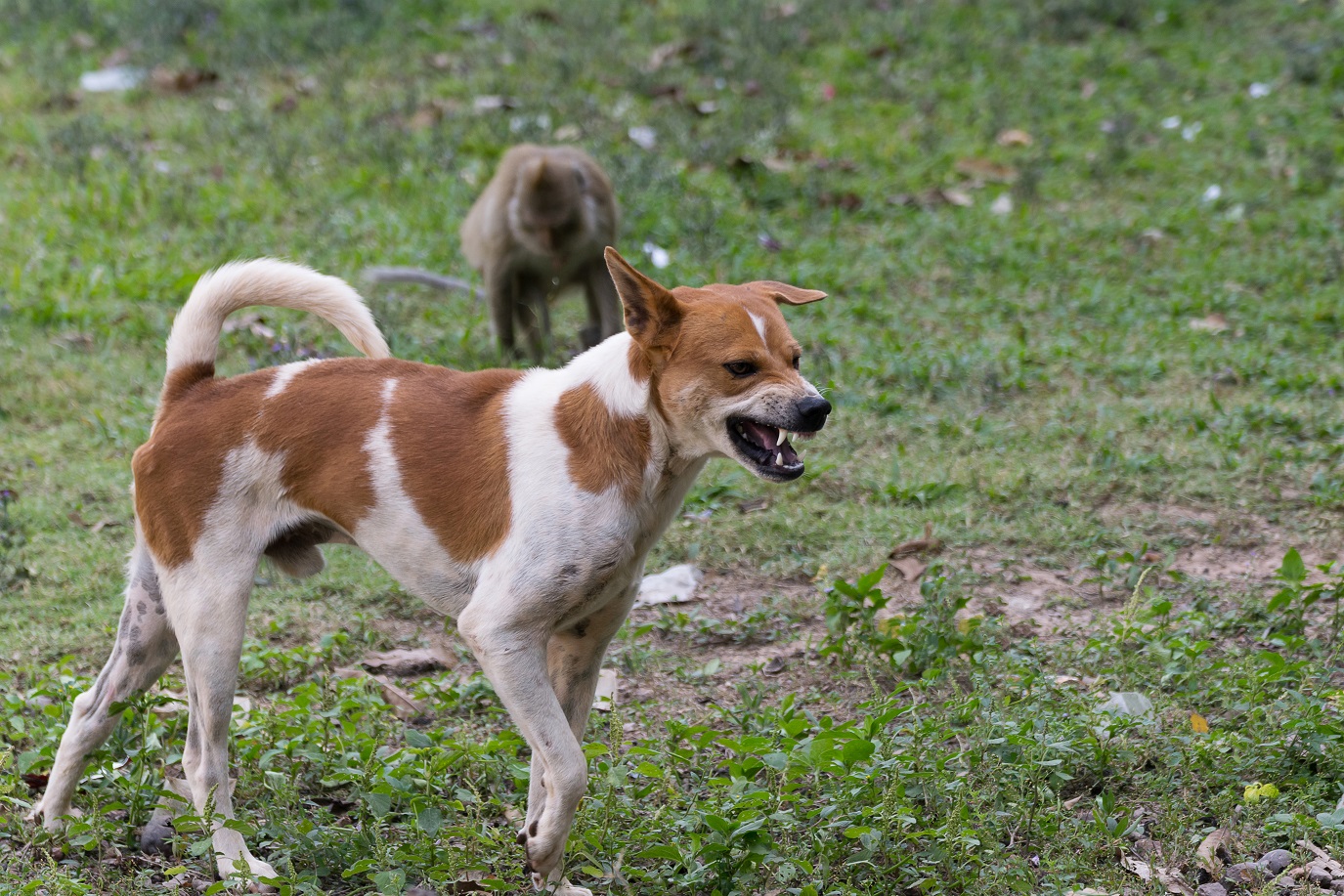
When to Intervene: Play Growling vs Aggressive Growling
Not all growling is a cause for concern.
Dogs growl for all kinds of reasons, some of which are perfectly innocent.
But learning the difference between acceptable play growling and aggressive growling is crucial – for your own sanity, if nothing else.
After all, wasting time intervening in perfectly normal situations is probably something your schedule could do without.
So, how exactly do you tell the difference between problem growling and acceptable growling?
Simple… Body language.
Dogs speak with their bodies. Learn to speak their language (or at least understand it), and everything will suddenly become a whole lot clearer.
Next time your dog lets loose with some growls, check out what’s happening with their body.
If their stance is loose and relaxed
…Their tail is wagging or they’re sticking their behind up in a bow
…If their eyes are bright and shining;
…Their ears are perked up and if they’re bouncing or jumping around in excitement, relax. They’re playing.
If, on the other hand, they’re displaying any of the following signs, keep a close eye on what happens next… something’s afoot.
Your dog is feeling scared, threatened, or annoyed. If you’re not careful, it could quickly escalate into something more dangerous.
- A rigid, tense posture
- A slightly upturned nose that exposes their teeth
- An intense, fixed stare
- Curled lips
- Raised hackles
- A stiff, straight tail
- A lowered, stretched forward head and neck
Related Post: How To Calm An Aggressive Dog – Simple Tips For Aggressive Behavior
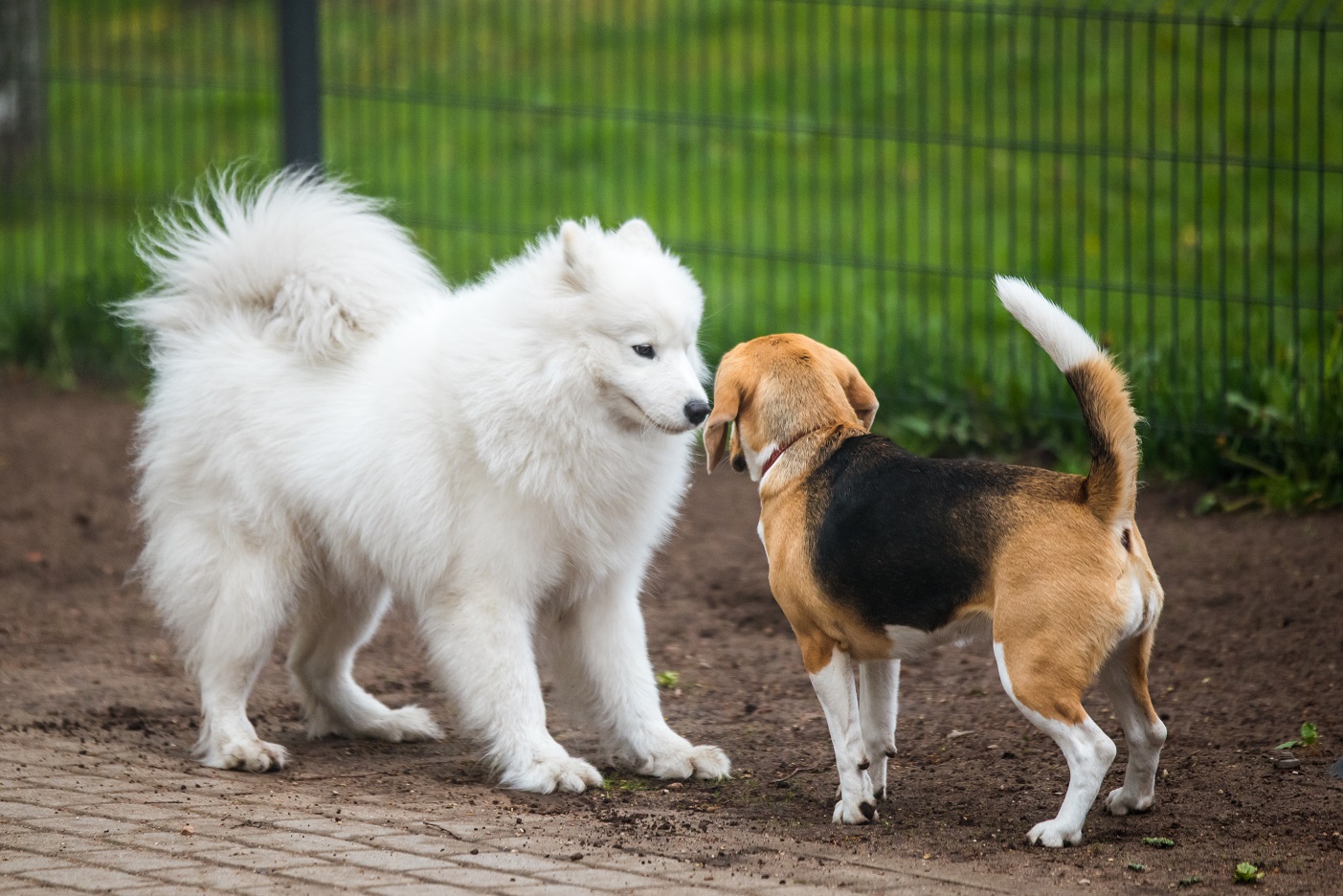
How to Stop My Dog Growling At Other Dogs
Learning the difference between play growling and aggressive growling is one thing. But if the growls are definitely not the play kind, what exactly do you do next?
Fortunately, there’s numerous way to tackle the problems, including…
Establish the Root Cause
Before you can address a problem, you need to know what’s causing it in the first place.
Going into something all guns blazing without having the faintest idea of what you’re dealing with isn’t just pointless. It’s counterproductive.
After all, no two problems are the same, and no two solutions are either. A dog that growls out of fear, for instance, will need to be approached in a very different way to one that’s growling out of possessiveness.
When your dog’s growling or acting aggressively, it’s hard to keep a sense of perspective. But if you want to put an end to it, you’re going to have to try.
Take a step back and look at the wider context.
- Does the growling only happen when another dog approaches your dog’s toys or food?
- Do they tend to growl at anyone and anything that comes into the yard or house?
- Have they ever displayed any other signs of aggression?
- Have you noticed any signs of anxiety or fear?
The more pieces of the puzzle you can fit together, the better chance you’ll have of seeing the overall picture and finding the appropriate solution.
Make a Vet Visit
If your dog starts displaying any new behavior out of the blue, it’s always worth getting them checked over by a vet.
Certain conditions like hormonal disorders, viral and bacterial infections, trauma, or even nutritional deficiencies can all lead to out-of-character, aggressive behavior.
If you’ve noticed any other symptoms such as a change in eating or sleeping patterns, disorientation, exercise fatigue, or increased lethargy, be sure to let the vet know to help them in their diagnosis.
Introduce a Little Control
Whether your dog is growling out of anxiety, protectiveness, dominance, or anything else, a lack of emotional control isn’t going to help the situation any.
Unfortunately, dogs aren’t known for their love of self-help books and meditation. If they need to learn a new skill (and yep, emotional control is exactly that), you’re going to have to teach them.
How? For a start, you can start introducing the calming exercises into their routine from The Online Dog Trainer.
Not only will the exercises teach your dog how to keep their emotions in check in even the tensest situations. They’ll also do a great job of putting them in a calm, focused state that’s perfect for training.
Remove the Triggers
Remember when people used to think that throwing a kid into the pool would help them learn to swim? It didn’t work then, and it doesn’t work now with dogs.
Behavioral techniques like counterconditioning and desensitization can go a long way to helping dogs deal with anxiety and territorial-based aggression. But while they’re in progress, avoid ‘flooding’ your dog with over-exposure.
If your dog growls at other dogs while they’re eating, feed them separately and remove the bowls when they’ve finished to avoid any tension.
Remember to avoid leaving toys or bones lying around if they cause issues.
If your dog growls at other dogs on walks, avoid walking them during busy times or in areas you know a lot of dog walkers frequent.
The avoision techniques needn’t be forever. The idea is to simply remove the triggers for now while you work on addressing the root cause of the problem through structured training and socialization.
Related Post: Why Is My Dog Being Aggressive All Of A Sudden?
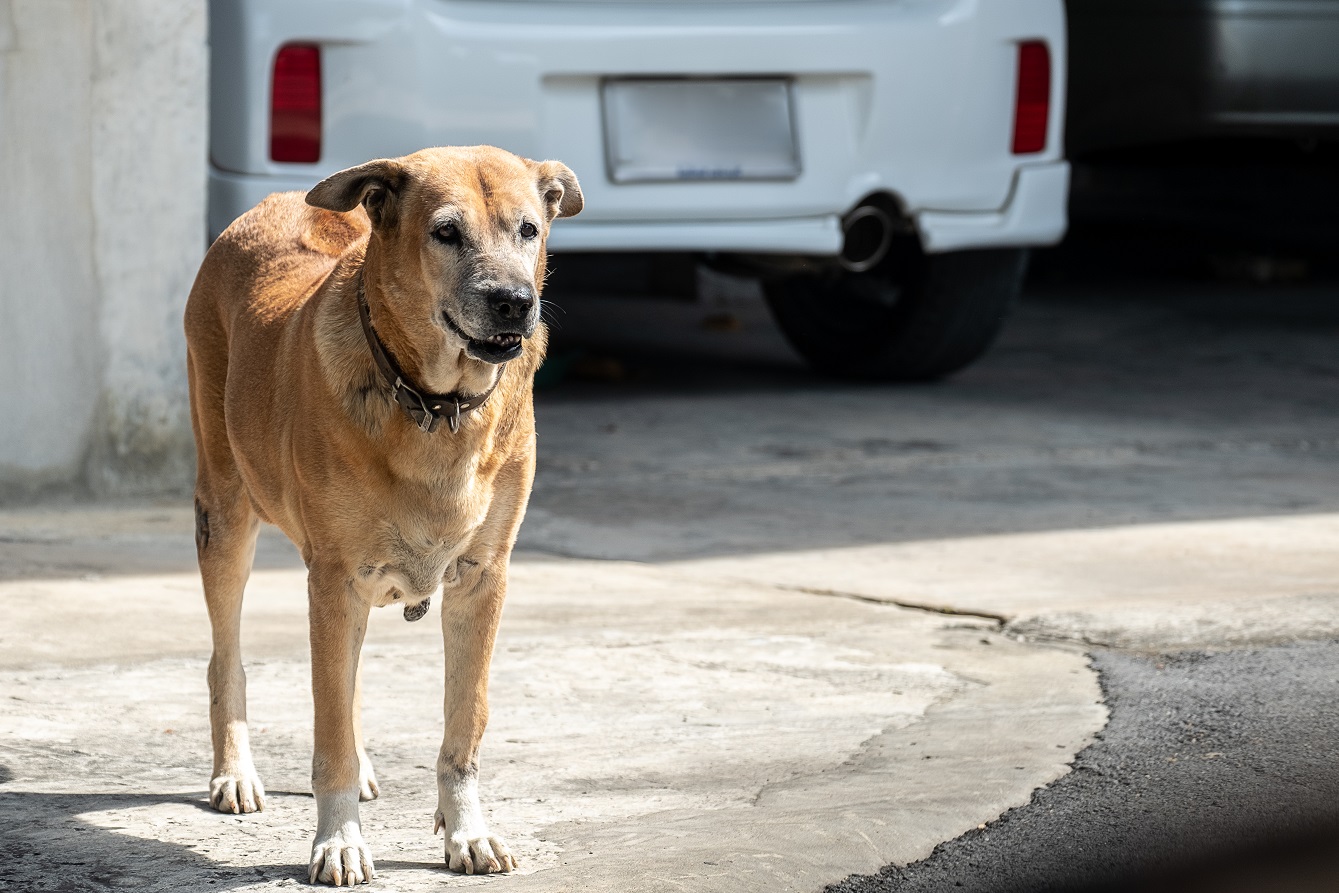
Work on Desensitization
Desensitization is a behavioral management technique that can help with numerous behavioral problems. It’s a very gradual process that works by making a frightening stimulus less frightening through controlled exposure.
If you have a friend with a particularly placid, friendly dog that your own dog hasn’t met, arrange for a meet and greet. Keep the other dog out of sight at first. Then, ask your friend to walk with their dog at a distance of around 20 feet.
If your dog starts to growl, command them to sit as a distraction. If they sit and stop growling, reward them with a high-value treat and plenty of praise.
Keep practicing. If you can draw more friends and more unfamiliar dogs into the exercise, so much the better.
Over time, gradually work on decreasing the distance between your dog and the other dog.
Once they’re happy enough to sit by and let the other dog pass without issuing a single growl, take your training to the street by walking in areas you’ll know you’ll meet other dogs.
Keep a wide berth at first, gradually reducing the distance as your dog gets more confident. With practice, praise, and plenty of treats, you should eventually get to the point you can walk anywhere without worrying about how your dog might react.
Take a Step Back
If you live in a muti-dog household, a little bit of growling is par for the course.
Establishing and maintaining the pack hierarchy is something most dogs are pretty good at managing themselves. If a dog of a lower status steps out of line, it’s normal for a more dominant dog to remind them of their manners with a few growls.
Once the relationship is re-established, the behavior will usually subside, and harmony will be restored. Stepping in by scolding the dominant dog and supporting the underdog could just prolong the tension.
Keep a close eye on the behavior and intervene only if the aggression escalates and puts either dog at risk of injury.
Keep Calm and Carry On
Teaching your dog to stay calm is one thing. Teaching yourself to do the same thing is another, equally crucial (and sometimes, equally challenging) task.
Let’s face it, staying calm when your dog growls at every dog they meet isn’t easy. After a few times of it happening, you’ll probably start getting anxious and nervous every time you catch sight of an approaching dog.
Which is natural enough. The problem is, it’s not helping the situation one little bit.
Dogs are empathetic: if you get anxious, they’ll sense it. In some dogs, it’ll make them protective and more inclined to growl at the thing they perceive as a threat.
In others, it’ll act to exacerbate their own anxieties and fears.
If you can teach yourself to stay calm and relaxed, your dog will be more inclined to do the same. If they still struggle, the step-by-step calming exercises we touched on earlier should put them on the right track.
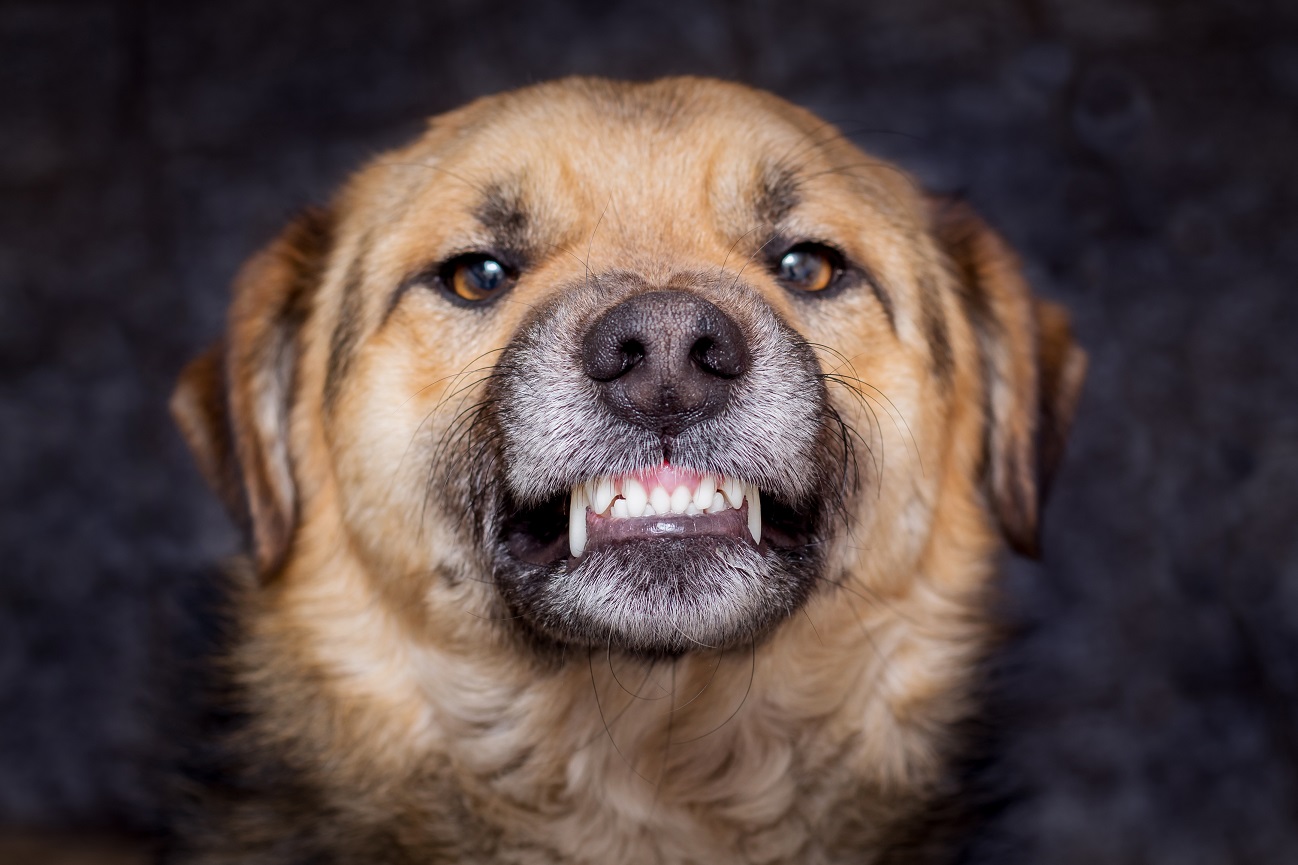
Wrapping Things Up
Owning a dog can be rewarding, joyful, and all kinds of wonderful. It can also be hard.
Dealing with a growling dog is one of those challenges we’d all rather do without. The thing is, it’s not uncommon. Not by a long shot.
Knowing other people are dealing with the same problem isn’t necessarily going to make the experience any easier, but knowing that many of them were able to move past it just might.
By identifying there’s an issue, you’re already on the right path. Providing you’re persistent and consistent in applying the solution, you’ll be home and dry before you know it.
